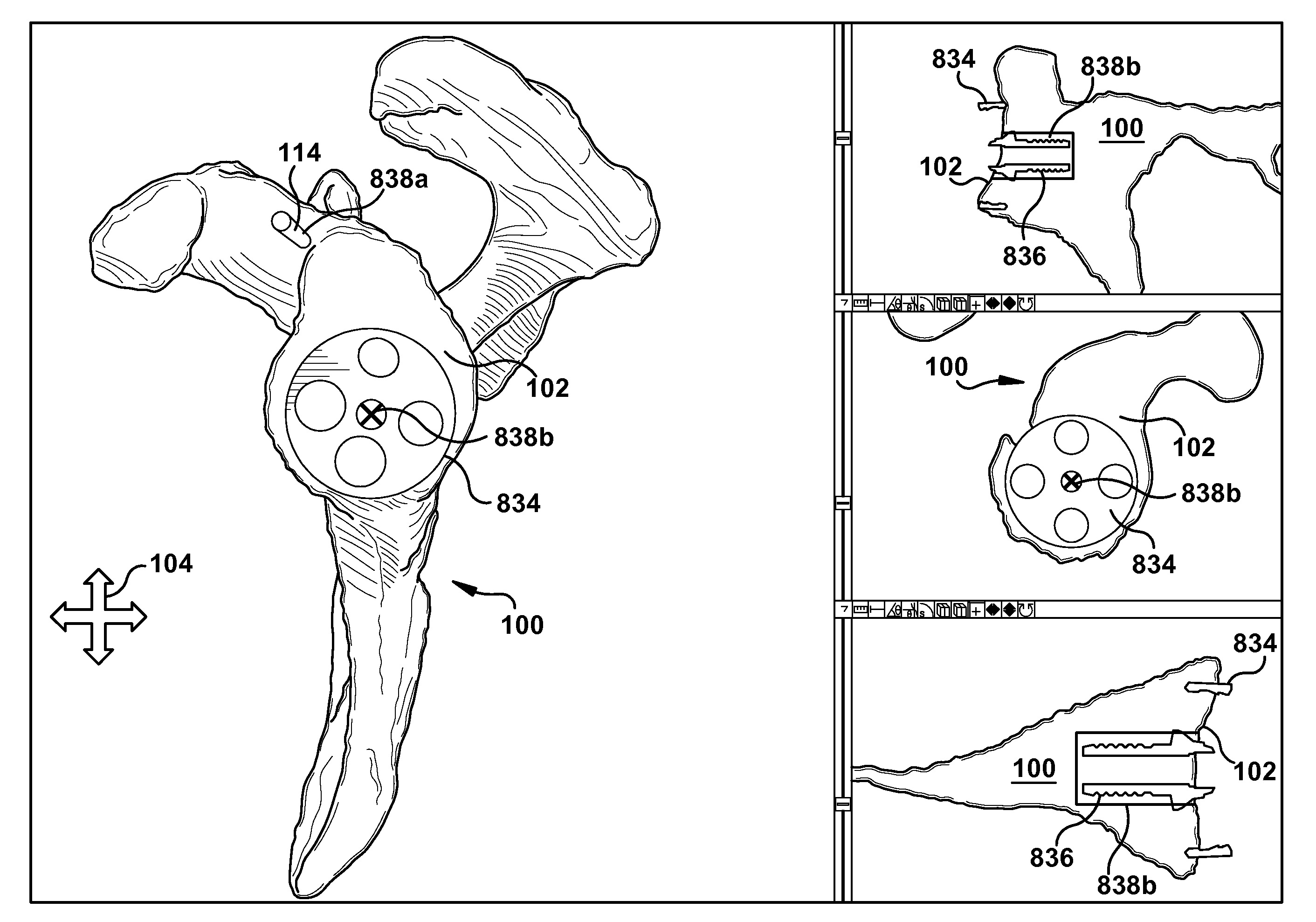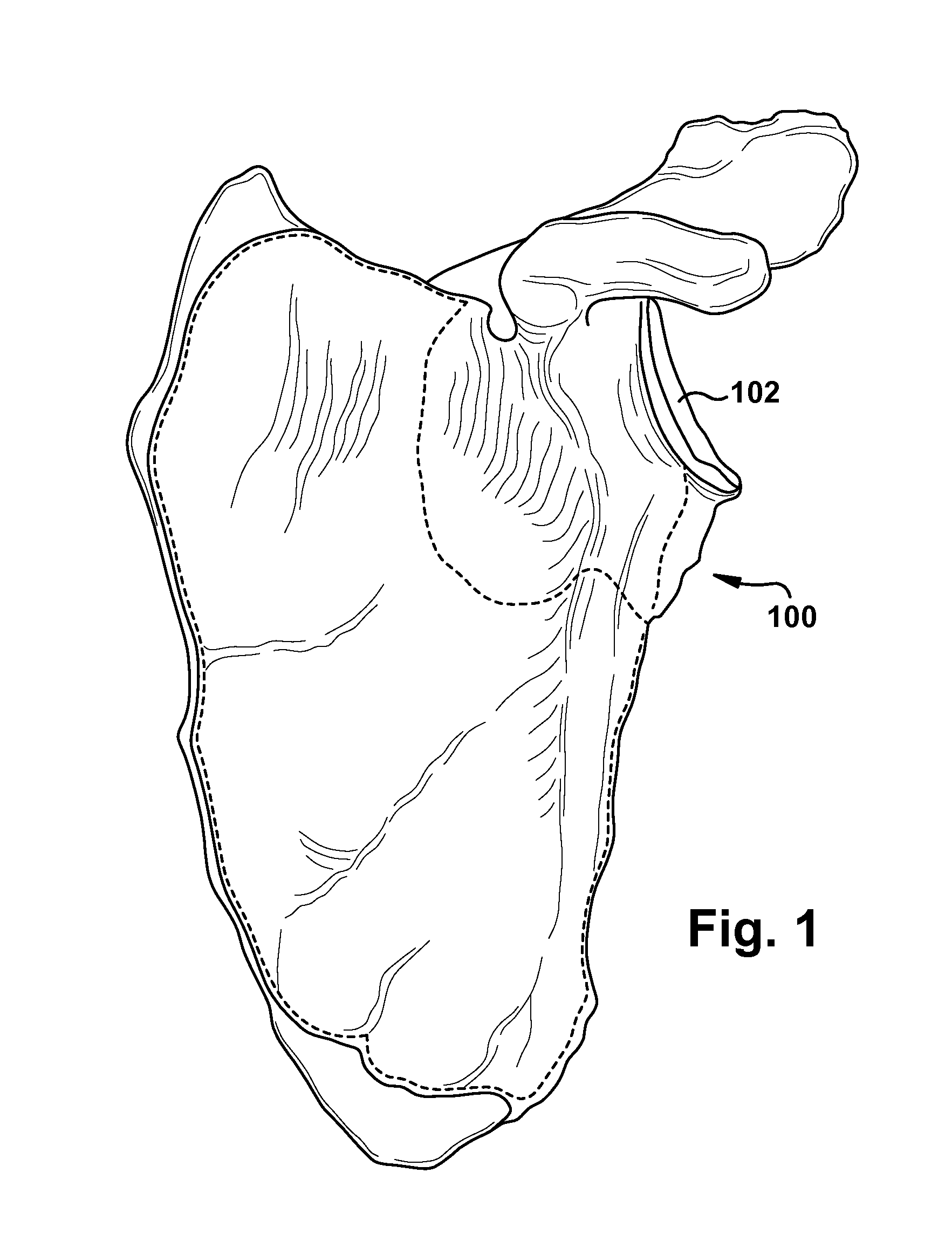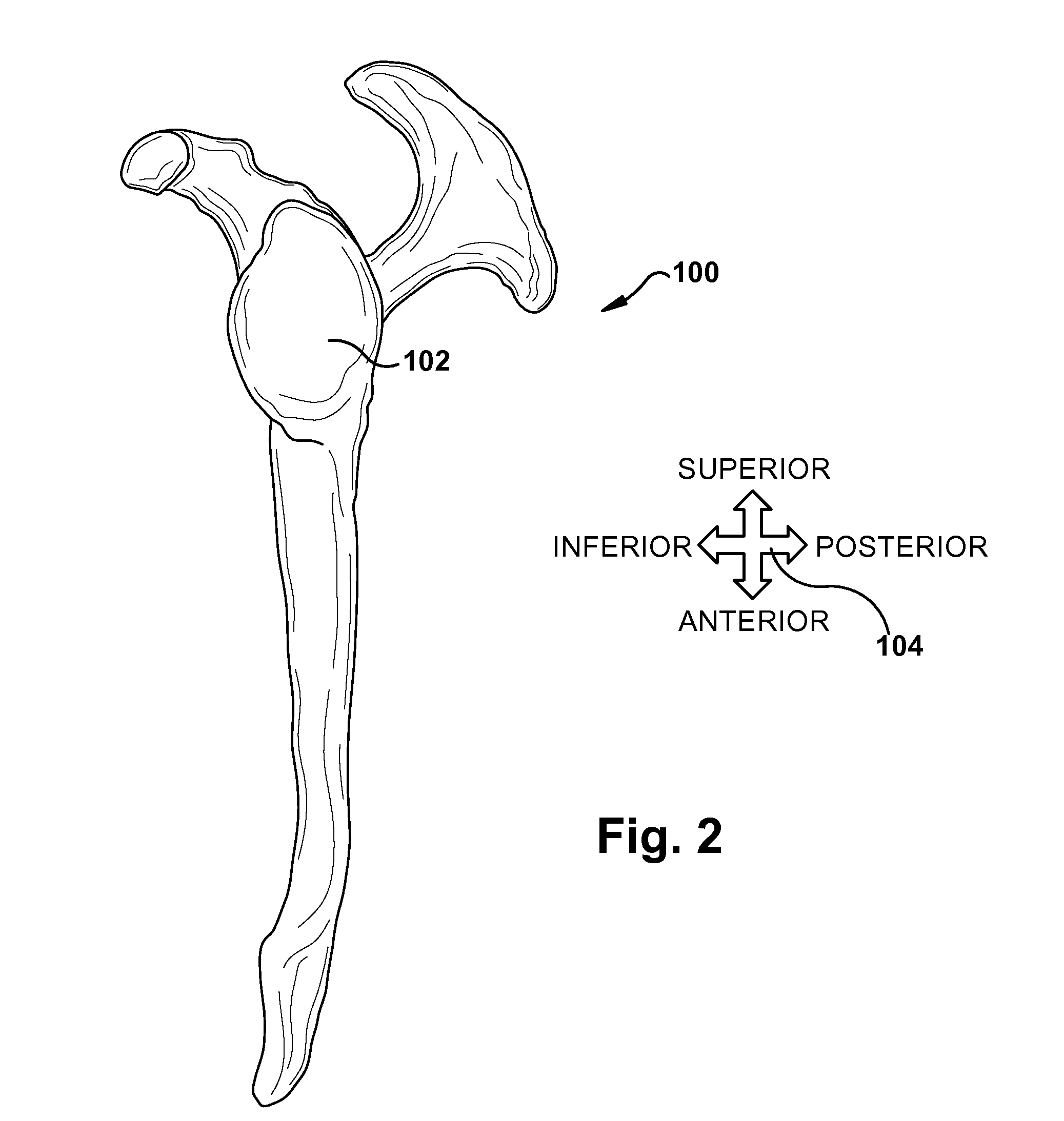System and method for association of a guiding aid with a patient tissue
a technology of guiding aids and patient tissues, applied in the field of system and method for association of guiding aids with patient tissues, can solve the problems of obscured parts, surgeons may not be able to precisely determine the location of exposed areas relative to the rest,
- Summary
- Abstract
- Description
- Claims
- Application Information
AI Technical Summary
Benefits of technology
Problems solved by technology
Method used
Image
Examples
second embodiment
[0084]FIG. 16 depicts an example use environment for the guide 416′ of the Directional arrow 104′ indicates the superior / inferior and anterior / posterior directions. The body of ischium, body of ilium, and body of pubis are shown generally at 1646, 1648, and 1650, respectively. The acetabulum 1652 (here, the primary patient tissue area 108′), which is formed in part by these three bodies 1646, 1648, and 1650, has a recessed acetabular fossa 1654 and is surrounded by an acetabular margin 1656 (here, the secondary patient tissue area 110′, shown approximately in FIG. 16 as being outside the dashed differentiation line 312′).
[0085]In accordance with the present invention, FIG. 17 depicts a guide 416′ including a base 418′, a stem 1758, and at least one spacing arm 1760. The base 418′ has a lower base surface 520′ (shown partially in phantom line in FIG. 17) spaced apart from an upper base surface 422′ by a base body 424′. The lower base surface 520′ is contoured to mate with the acetab...
first embodiment
[0089]The guide 416′ may be at least partially customized responsive to preoperative imaging of the patient tissue. For example, the lower base surface 520′ of the base 418′ could be at least partially configured through the use of computer tomography (“CT”) data of the patient tissue to have a longitudinally downward-protruding portion corresponding to the acetabular fossa 1656. Additionally or alternatively, the lower base surface 520′ could be at least partially configured through use of patient scans including digital or analog radiography, magnetic resonance imaging, or any other suitable imaging means. The patient tissue preoperative images are optionally displayed for review and manipulation before / during configuration of the lower base surface 520′, such as through the use of a computer or other graphical workstation interface described above with reference to the present invention. The configuration of the lower base surface 520′ is described herein as being performed using...
third embodiment
[0112]FIG. 29 depicts a third configuration of a guide 416″ according to the present invention. In FIG. 29, the guide 416″ is configured to assist with correction of a malunion or other deformity in the head of a femur, humerus, tibia, phalange, mandible, scapula, or any other suitable bone or other patient tissue. The guide 416″ of the third configuration 416″ can be used similarly to the guides 416″ of the first and second configurations.
[0113]FIGS. 30-39 depict a guide 416′ according to certain additional aspects of the second embodiment of the present invention. The guide 416′ of FIGS. 30-37 is similar to the guide 416 of FIGS. 1-15 and the guide 416′ of FIGS. 16-24 and therefore, structures of FIGS. 30-39 that are the same as or similar to those described with reference to FIGS. 1-15 and / or 16-24 have the same reference numbers with the addition of a “prime” mark. Description of common elements and operation similar to those in the previously described first embodiment will not...
PUM
 Login to View More
Login to View More Abstract
Description
Claims
Application Information
 Login to View More
Login to View More - R&D
- Intellectual Property
- Life Sciences
- Materials
- Tech Scout
- Unparalleled Data Quality
- Higher Quality Content
- 60% Fewer Hallucinations
Browse by: Latest US Patents, China's latest patents, Technical Efficacy Thesaurus, Application Domain, Technology Topic, Popular Technical Reports.
© 2025 PatSnap. All rights reserved.Legal|Privacy policy|Modern Slavery Act Transparency Statement|Sitemap|About US| Contact US: help@patsnap.com



